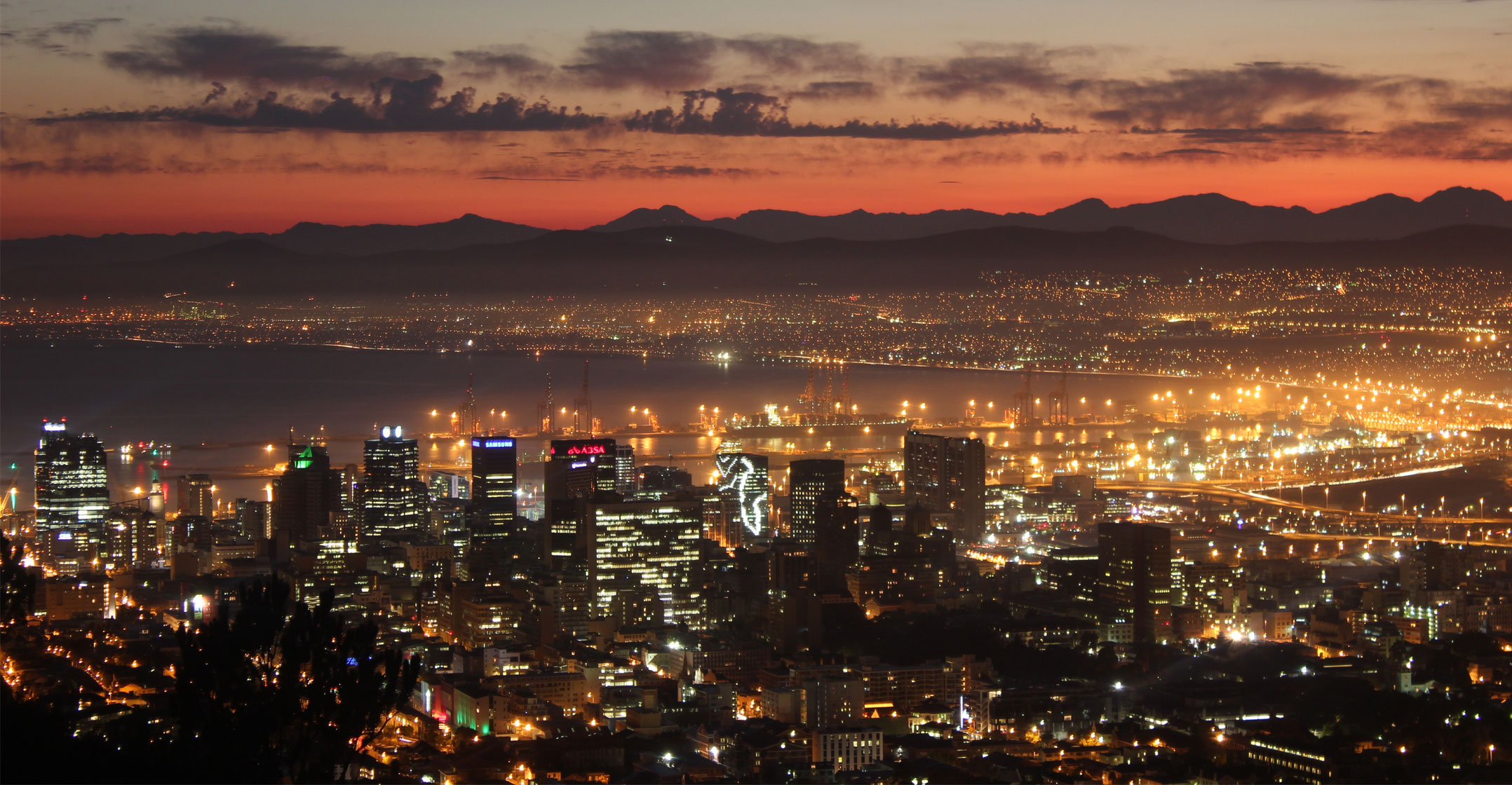
Earth Day, on 22 April, might have a bit of extra significance this year. It might be the day that, for the first time, a great world city runs out of water.
On that day, according to the local government of Cape Town, water in the dams that feed this most beautiful of coastal cities will drop below critical levels, and stand at 13.5% of capacity. Taps will run dry in homes and businesses, and residents may have to start lining up “between metal fences, waiting to fill up containers from standpipes”. In this Mad Max-style dystopia, they will then get a maximum of 25l per person, as the city government desperately tries to reduce water consumption to half of what it was just two years ago.
The first things you see when you land at Cape Town’s gleaming airport are signs imploring visitors to save water. You walk out through a disturbing bit of public art: 87 one-litre bottles hanging from the ceiling, a reminder that nobody should use more than that amount per day. Just hours after I left South Africa, that installation might have become even more disturbing: 37 of those bottles should’ve been taken down, as the mayor, Patricia de Lille, announced that the new requirement, starting 1 February, was just 50l a day. Punitive new tariffs are also coming into force that will increase water bills for high-end consumers more than seven times over.
It’s far from certain how the more stringent restrictions will work. Still, it’s inspiring to see how hard much of the city has been working to save water. Hotel bathtubs have had their plungers removed. Many wealthy residents drive around in expensive but dusty cars, which haven’t been washed for months. On some level, the crisis mentality that has taken hold in Cape Town is the sort we should all be exhibiting when facing the inevitable disruptions of climate change.
But Cape Town’s battle to keep its water taps running should also serve as a warning. This is, after all, one of the most naturally blessed parts of the world; how did it get to this point?
Climate change has a great deal to do with it, of course. The lush Western Cape province has had to do without rain for three years now; the six big dams that feed its water pipes were at 28% capacity on 19 January. Meanwhile, investment has lagged the crisis. Only a fraction of this stored water is usable, because many South African dams haven’t been de-sludged for years. The distribution system is equally buggy: a 2012 study of 132 municipalities suggested that 37% of water use brought in no revenue — meaning less cash for reinvestment — and a quarter was lost to leaks. Cape Town’s population has also grown by more than 55% in the past two decades, even as its dam capacity has increased only marginally.
Unprepared
Another lesson is that unpreparedness for climate change is often the result of a dysfunctional politics that ignores clear warnings. The Western Cape and the Cape Town municipality are run by the Democratic Alliance, while the national government is run by the ANC. This political divide has resulted in an entirely underwhelming response to a predictable problem.
If we’re going to allocate blame, to my mind the largest share accrues to the national government. In the late 2000s, Cape Town’s municipal government was warned that it would need new water sources; it worked instead on a sensible demand strategy that focused on infrastructure repair, water pressure management and so on. The city met its water-saving target three years in advance. The national government, by contrast, chose to allocate an excessive amount of water to agriculture in the Western Cape. It also failed to release emergency drought relief funding — after all, who wants to fund the rescue efforts being carried out by your political rivals? In this, as in so many ways, the ANC has been a disappointment to those of us across the developing and postcolonial world who still nurture a soft spot for Nelson Mandela’s party.
The lessons are clear. It’s easy to play politics about the crises that will envelop our cities as the disruptions caused by climate change gather momentum. You can ignore warnings, under-invest and pretend that the rain will fall. Or you can pull together before the taps run dry. — By Mihir Sharma, (c) 2018 Bloomberg LP




